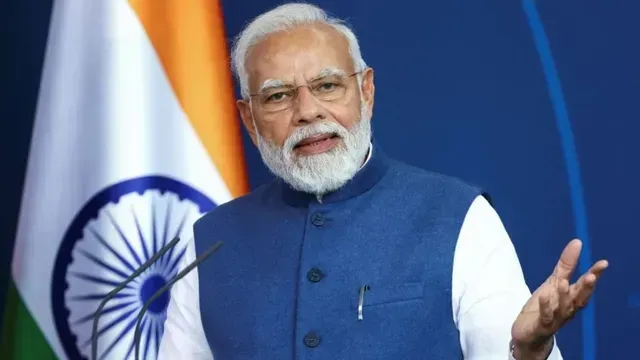- By News Desk
- Tue, 16 Sep 2025 05:29 PM (IST)
- Source:JND
PM Modi 75th Birthday: Prime Minister Narendra Modi’s leadership has redefined the idea of mass mobilisation in Indian politics by blending vision, participation, and decisive action. Since his tenure as Gujarat Chief Minister and later as Prime Minister, he has consistently demonstrated the ability to transform policies into nationwide movements that engage citizens at every level. His model of decentralised governance merges top-down initiatives with bottom-up participation, ensuring that reforms are not only implemented but embraced by society.
National campaigns such as Swachh Bharat Abhiyan, Vocal for Local, and Azadi ka Amrit Mahotsav reflect PM Modi’s strength in turning bold ideas into collective missions. During the COVID-19 crisis, his call for Janta Curfew and expressions of solidarity saw unprecedented voluntary participation across the nation. Financial inclusion through Jan Dhan Yojana and the rapid adoption of UPI further showcase how government schemes under his leadership have mobilised millions into formal economic structures.
ALSO READ: PM Modi’s 75th Birthday: The Organiser Who Redefined Indian Politics
Equally significant has been his focus on cultural and civilisational revival, from the Statue of Unity to the Ram Temple in Ayodhya, alongside initiatives like Mann Ki Baat and MyGov that make governance more participatory. This article explores how PM Modi’s model of national mobilisation has reshaped governance, inspired trust, and transformed India’s development journey.
Similarly, launched on October 2, 2014, the Swachh Bharat Abhiyan stands as a defining example of national mobilisation, transforming hygiene into a people’s movement. By 2024, the mission had facilitated the construction of over 12 crore household toilets, significantly expanding access to sanitation. This unprecedented effort sparked one of the world’s largest behavioural shifts, with rural toilet coverage rising from less than 40% in 2014 to over 95% by mid-2019, benefiting crores of citizens and reshaping India’s public health landscape.
Complementing this, the Give It Up campaign for LPG subsidies, launched in 2015, encouraged voluntary surrender by affluent households resulting in over 1.15 crore participants opting out by February 2025, redirecting savings to expand clean cooking access under schemes like Pradhan Mantri Ujjwala Yojana, which aligns with Swachh Bharat's broader goals of promoting women's health as part of a holistic cleanliness drive.
Participative Governance For Transformative Impact
His leadership is distinguished by a participative and action-oriented governance style. At the forefront is MyGov, a flagship digital platform launched in 2014, which revolutionised governance by crowdsourcing ideas and expert inputs directly from citizens, setting new standards in participative democracy and inclusive impact.
Complementing this digital dialogue is Mann Ki Baat, PM Modi’s personable monthly radio address. Through storytelling and direct engagement, the program showcases grassroots success, highlights schemes like Swachh Bharat and Jan Dhan Yojana, and makes governance accessible, relatable, and participatory.
The flagship Pradhan Mantri Jan Dhan Yojana (PMJDY) launched in 2014, expanded financial inclusion by opening over 56 crore bank accounts through the JAM (Jan Dhan-Aadhaar-Mobile) trinity, enabling millions to access formal banking and government subsidies digitally. Simultaneously, the Saubhagya scheme brought electricity to homes of 2.86 crore households, achieving near-universal household electrification in record time.
Cultural And Civilisational Revival
As a patriotic visionary and methodical nation-builder, he not only safeguarded India’s priceless heritage, but also rekindled collective consciousness. Due to his multiple decisive initiatives, the nation reclaimed its cultural legacy while anchoring progress in a renewed sense of identity and shared pride.
The Statue of Unity, unveiled in 2018 as the world’s tallest statue, honours Sardar Patel’s legacy and inspires unity and development, boosting local tourism. The National War Memorial, inaugurated in 2019 near India Gate, is a tribute to fallen soldiers, reinforcing values of sacrifice and patriotism.
The Pran Pratishtha at the Ram Janmabhoomi Temple in January 2024 became the centrepiece of spiritual resurgence both nationally and internationally.

